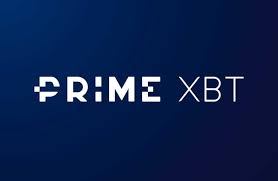“Mind The Gap!” – The life and times of a man on the move Episode 47
It’s all about data, Ryan Nettles 10 golden years, Go the right way Down Under, and an (in)vast move toward full multi asset trading!

In this weekly series, I look back on what stood out, what was bemusing, amusing and interesting during my weekly travels, interesting findings within the FX industry and interaction with an ever-shrinking big wide world. This is purely observational and for your enjoyment.
Monday: FX is pioneering the information age. It is now time to take it all seriously
I spent Monday of last week partly attempting to avoid a tremendous heat wave which created temperatures of over 41 degrees Celsius and the remainder of the day ensuring that what was left of my cognitive abilities were concentrated toward being part of two very interesting FX industry analytics revolutionary dynamics.
Ever since the dawn of MetaTrader 4 in 2004, the ease of access into a global electronic trading market by a vast array of companies whose executives do not necessarily hail from the vast, well backed safe havens of the institutional financial technology or interbank dealing sectors in London, New York or Chicago, operating a risk model and dealing desk has been a very difficult department to operate.
been a very difficult department to operate.
Indeed, maintaining a career as Chief Dealer is a commendable one indeed, as it can in many cases be akin to fighting several fires from several directions.

Having to manage the different relationships between the banks, non-bank liquidity providers, prime of primes, internal sales staff and of course the traders themselves is tricky enough, however there are continued requirements to analyze data and make sure all execution and risk management has been conducted not only in accordance with company requirements – the fate of electronic trading companies lies almost completely in the hands of the dealers – but also in accordance with regulatory requirements.
Traders are also highly astute these days, and the combination of regulatory reporting and trade execution requirements, analytics-savvy traders and a brokerage business that desperately needs to go multi-asset, at last there are steps being taken.
“We are using anonymous average data from over 100 brokerages and on retail, are comparing spreads, commissions and swaps. We collect direct data.”
“For institutional price feeds, we are creating a smart matching mechanism where on one side we have multiple LPs connected to TradeGuard, and then on the other side we analyze brokers order books to see how fast they deal with orders, how good their fills are, and then by using machine learning tools we can see who can benefit from certain firms on a per instrument basis” said Mr Khizhnyak, who further explained that if you are a broker and know that your execution is good but have a batch of orders to check through, you can send us the order information and we analyze it trade by trade and can rate the quality and show details on each order.”
I will of course be reporting on this in full detail next week, including on how this type of analytical software is of use by traders, regulators and brokers alike in order to make the entire business more sustainable.
The information age is here, and it is all now at everyone’s fingertips.
Wednesday: Ryan Nettles, you can look back with pride and confidence
As this week progressed and I arrived back at my desk, a longstanding friend of mine and industry professional that I have tremendous respect for, Ryan Nettles, messaged me to let me know that he was moving on after some ten years at Swissquote.
Whilst this is something that can certainly be considered a very important development, it is well worth looking at the match of quality between Mr Nettles and Swissquote as a highly advanced company that has strengthened itself tremendously during Mr Nettles’ tenure.
A Director and member of Swissquote’s senior management, he joined the company in April 2010, at that time based in Swissquote’s Zurich office, before moving to Gland in 2012.

Looking back four years, I remember Mr Nettles reminiscing on his inaugural period at Swissquote.
“Swissquote entered the leveraged FX business in 2008 and I knew Swissquote had great potential as a listed Swiss bank which offered online trading across all asset classes and I wanted to help grow its FX business further in Switzerland as well as internationally where it was not well known. I met with the executive management initially as they also shared the same vision as myself for Swissquote. I joined as Head of FX Sales, then was promoted to my Directorship position after the acquisition of ACM” he told me.
“Swissquote’s FX trading operation is very special” enthused Mr. Nettles. “Our systems operate in a totally automated manner. Our FX trading operation is managing trading volumes over 4 billion USD per day and is staffed by 9 traders whom have strong technical knowledge as the systems are completely computerized.”
“Rather than trading using traditional manual methods, our traders spend alot of their time purely conducting optimization with the help of our dedicated quant department and supervision as every component of our trading system, from price discovery and distribution to all of our platforms to execution with the clients and liquidity providers including risk management is completely automated. We do have the ability to override the system manually but we never need to do this under normal conditions” he explained.
Five years ago during a visit to Switzerland I asked Mr. Nettles to cast his mind back over what had been the end of his first five years at Swissquote, and recall a moment where he has seen a development and thought “that is genius!”.
He said “This was probably most applicable when we launched our SQore platform which is unique. I have not seen any bank provide such a service for the retail trader, and I am very pleased with its development and function, it is a very sophisticated and successful product”.
Congruently, we had to counter this question with “what was the biggest heart stopping moment over the last five years?”
Mr. Nettles concurred that the Swiss National Bank’s removal of the 1.20 peg on EURCHF was “the biggest shocker. Despite this, our technologies work perfectly” he said.
“The only unexpected thing was the complete lack of any liquidity which I have never experienced before. Due to the reliability of our technology and quick reactiveness of the FX Trading and IT teams we handled it very well, thank goodness. There were some negative client balances due to the gap in the market, but this was an unprecedented event and really shows how quickly things can change.” he said.
Five further years have passed since then, and thanks to rock solid executive direction with Marc Burki leading the way and a genuine multi-asset solution which majors on listed derivatives and is the only firm in our industry which offers Swiss banking facilities and multi-asset derivatives trading from a proprietary platform, Mr Nettles can look at his tenure as having been monumental.
Wishing you all the very best in your next venture!
Thursday: The scattering and the ingathering Down Under
Some very detailed perspectives landed within my earshot on Thursday this week, largely relating to the continual wrangling that has ensued as a result of the Australian Securities and Investments Commission (ASIC) having made a knee-jerk reaction to leverage and product restrictions in European markets (which are totally different to Australian ones!), and the letters that have been sent to brokers asking them to avoid selling products outside Australia.
I have heard that ASIC’s retrospect now considers that haste was a major factor, and I have it on reasonably good authority from Australian regulatory consulting groups that ASIC is looking at backtracking slightly, however the thinkers and developers in Australia are bemused.
“This is what I have been seeing” said a friend of mine who is a software engineer based in Sydney. “We know some brokers have stated they will pay back their client monies from offshore jurisdictions and restructure, although I have no idea to what business model that restructuring would be.”

“We know that some brokers have stated they will pay back the money, but offers quite often say that the same clients would be signed up to one of their islands child platforms, which is really not the way to go” he said.
Yes, quite right. Perhaps ASIC now realizes after the stable door has closed that by coming down hard on a very well organized region of highly commendable executives and well run companies that the regulator itself has total ability to conduct surveillance on via its First Derivatives regulatory solution, that instead of maintaining the status quo and doing a very good job of it, it will push the good industry offshore which is a total step back.
“Now this is smart thinking. Retain the AFSL from ASIC as a degree of respectability but offer their cohorts the chance to play in high leverage we know they all want with the perception of client money safety, which may or may not exist if they’re all going offshore, but let us assume the retail is protected by the parent company’s dispute resolution and segregated account, then it may be a reasonable compromise because yes, the ‘child company’ may be in Vanuatu or somewhere totally banal, but there would be recourse over an Australian parent firm” he said.
Now of course, this is not an ideal scenario at all, but ASIC has basically taken a pair of scissors to a totally respectable industry sector for very little reason other than a ‘me too’ approach, and do you really want to emulate ESMA? Australia and mainland Europe in terms of capital markets and advancement are effectively thermonuclear fission versus a horse and cart.
My Antipodean friend said “Some companies here have actually begun giving the proverbial finger to ASIC. Presumably they see a window to fish in territory they already know such as regional Chinese cities while the other fishing boats are in high dock, and assume ASIC will take 6 months to sort them out, then they could perhaps transfer the retail to their islands platform which is a more dangerous ballsy play, but again I can understand why they’re doing it strategically.”
“All that offshore stuff and circumvention usually is the behavior of MT4 white labels without their own systems, however at the very well organized end of the business, you have what IG is doing which is looking at core and emerging markets. Effectively, that is the same business model, just moving into regions where the FX trading infrastructure is minimal such as South America, and they can build it up themselves with their own systems and get a very good loyal audience” he said.
Yes indeed. that is IG Group’s strong point. Let’s face it, IG is a retail brokerage, but it has garnered its own client base and given them what they want, and it shows. The company has 80% of its clients in its home market of Great Britain, and has now pragmatically begun establishing similar markets such as its Chicago base in the US. Let’s see when IG begins offering listed derivatives via its Chicago branch and competing with futures exchanges.
“Again though Andrew, this is the same business model which involves more marketing, but higher returns” said my colleague. “MT4 brokers making moves such as that are replicable though, as they have first mover hassle and costs, and the burden of educating the masses but many are offering the same old same old platform everyone else offers, with these platforms in some cases with stock broking platforms and some having moved to multiple asset classes with 10,000 instruments” he said.
“I would place firms like Robin Hood within this cohort, with zero cost, offering various assets and and probably margin trading, but then you get the platforms like Thinkmarkets or Larson Holz, who are moving to a Peer2Peer platform based around a private and public distributed software so traders can trade with each other in all financial instruments but keep their money in the own wallet and trade with some sort of virtual asset inventory” he said.
“Yes, this appears to be very risky and very left-field but I know why those types of companies are doing it” he said. “This type of competition has 2 advantages, the first being to try to get a new range of clients, those being virtual asset traders and traders and traders with such assets for collateral who want to trade standard instruments like FX, commodities and stick indices, and the other advantage being that they can eliminate costs. The cost structure to run a P2P infrastructure I guess is around 30% cheaper than standard platforms infrastructure after initial costs to build it” he said.
“I actually agree with you in this matter Andrew” he said. “That is because there is a third way which is a way you have been advocating, that being to look closely at the retail brokers that restructure their businesses and look toward a high net-worth client base away from retail, and not so much the prime liquidity providers within banks because that horse has bolted as they are selling to the same bucket shops they once were and that universe is dying and as probably pure B Book which means that there is no order flow so it could become a non-viable business for the banks so they may pull out and say the risk isn’t worth the tiny reward.”
“The problem for the b books is that high net worth individuals are the most profitable, not retail where some of the large well known retail firms are fully concentrated, however the small bucket shops can’t compete. You can go STP, but that is capital intensive and if the client base is predominately retail, there will be the same outcome and same underlying problem and therefore it is not a revenue generator. Even if targeting institutional trading or algo traders as this requires a institutional platform [not MT4 or even MT5 ]” he said.
Quite right. We all know, especially following our conference in London on May 7, that MT4 and b booking retail traders is not the way forward and that the institutional algo guys now need our technology and analytics, and our fast execution and astute dealing platforms.
“What about the retail trader? The HNW individuals? They just want to create and achieve their trading objectives” said my colleague. “They get technical analysis, news feeds, low spreads, high leverage [in some jurisdictions ] but marketing hype but still the anchor to be able to with some degree, retain some control [self driven active traders ] but the odds are not good, so what changes should mean that the platforms transmorph into some new business model into some new countries? he asked.
“Then of course, you have the most successful trading houses such as Jane Street, Renaissance, Bridgewater, and Optiver that work with in-house IP and trading methodologies that work, but they are in house so they are trading systems that wont see the light of day, but what if a broker runs a business model that offers institutional trading programs to retail, experienced and institutional traders who dont have the means nor infrastructure to put in place to trade like these trading houses, but on a restricted basis, limiting the number to retain the analysis edge, then run it as STP, maybe using P2P technology given institutional reticence to giving money to margin brokers?” he asked.
I would say that the answer to that would be high turnover trading, and institutions do not adopt high leverage so this would be a true natural hedge Book with the emphasis on zero spreads and instrument universe. Isn’t that what the professionals and institutional traders want?
Friday: Talking of multi-asset solutions…
This moves me nicely on to INVAST Global’s excellent decision to be able to offer a full prime brokerage and multi asset solution via MetaTrader 5.
If you cannot get the mainstream traders off the MetaTrader platform, then the smart thing to do would be to empower them by making the connectivity and availability the same as it would be if it was a professional dealing platform.
This is effectively what INVAST Global has done, and on Friday it became the first firm to offer this range of multi-asset prime of prime direct market access via MetaTrader 5.

I caught up with INVAST Global senior executive James Alexander earlier in the week just before Friday’s launch, who told me “At INVAST, we will be launching our DMA multi asset solution with exchange pricing and exchange execution, listed derivatives via MT5 and oneZero for the first time this week.”
This coincided nicely with oneZero’s tenth anniversary since its establishment, on which Mr Alexander told me “There are two things that immediately come to mind about oneZero, the first being that the company has a clear strategic focus with its business and a clear desire to deliver a multi asset solution, which at this point in the industry’s evolution both are absolutely vital.”
Quite right indeed.
Wishing you all a super week ahead!









